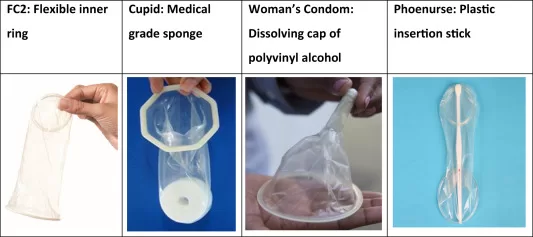Medical updates: Individuals are willing to take one-time risks and engage in unprotected sex with an individual whose sexual past they are unaware of. With this casual attitude, they tend to forget that there is a greater risk of sexual infections and/or pregnancy.
Valentine’s Day is here, and as excited as couples are to try interesting new things to up their intimacy game, it’s also necessary to take certain measures to ensure you and your partner don’t wind up in any type of trouble.
This Valentine’s Day, practice safe sex to stay protected.
What is safe sex?
Safe sex is described as any sexual contact that protects you and your sexual partner(s) against sexually transmitted infections (STIs) and unplanned pregnancy. It does not involve the exchange of bodily fluids such as sperm, vaginal fluids, or blood with anyone with whom you have sex.

Unprotected sex may put you at risk of STIs
Unsafe sex may expose you or your sexual partners to STIs.
This involves not only genital sex but any type of sexual contact (this includes anal, oral, vaginal, and some skin-to-skin contact).
Certain STIs (such as syphilis and genital warts) can be transmitted through sexual contact with an infected partner when a sore or rash is present.
Also
Unborn newborns are also at risk, because some STIs, such as congenital syphilis and HIV, can be passed from mother to baby throughout pregnancy and at delivery.
If left untreated, STIs can cause significant illness and long-term health consequences (including pelvic inflammatory disease (PID) and infertility in both men and women).
STIs are common. Some types of STIs include:
- Chlamydia
- Gonorrhea
- Syphilis
- Genital warts
- Genital herpes
- HIV
- Hepatitus A, B and C
- Mycoplasma genitalium
Since not all STIs show obvious symptoms, you and your sexual partners may be unaware that you have an STI. That is why it is critical to practice safe sex. For more secure intercourse, use condoms.
Condoms (also called sheaths or rubbers) provide the best protection against STIs. They act as a physical barrier to prevent the exchange of body fluids.
Although there is no guarantee that condoms and other barrier methods give 100% protection against STIs, when worn appropriately, they make this process safer.
Types of condoms
Condoms are a form of barrier contraception – basically, their role is to stop sperm from entering the vagina, mouth, or anus and lower our chance of contracting STIs.

Types of barrier methods include:
- Male (or external) condoms– a thin strong latex (rubber) pouch that come in different sizes and styles. (Not one size fits all.) Non-latex condoms are available for people who are allergic to latex.
- Female (or internal) condoms – a soft pouch made of synthetic rubber (looks a little like an external condom) with 2 flexible rings at each end. These condoms come in one size and are already lubricated, they are designed to fit inside the vagina or anus. Also read: https://medicalupdates.in/micro-cheatinghave-you-ever-had-a-flirtatious-exchange-with-a-co-worker-or-classmate-is-this-cheating/
- Diaphragm – a soft, shallow cup made of silicone that fits inside the vagina and covers the cervix (entrance to the uterus or womb). Diaphragms provide good protection against pregnancy, but they do not protect you from STIs.
How to have safer sex with condoms and other barrier methods
Follow these simple tips when using condoms and other barrier methods:
- Every time you have sex, always use a new, lubricated condom.
- Check the expiry date and do not use a condom after it has expired.
- When opening the package, take care not to rip the condom with your fingers, jewellery, or teeth.
- If you require additional lubrication, only use water-based lubricants. Other lubricants may cause condom breakage.
- Condoms should be used from the beginning to the finish of intercourse. When your partner pre-ejaculates (‘pre-cums’) on arousal, STIs might be spread.
- Condoms should be used on vibrators and sex toys shared by lovers.
- Latex gloves can be worn during vaginal ‘fingering’ or anus. Also read this:https://medicalupdates.in/medical-updates-medical-news/
- During oral sex, use dental dams (a latex covering put over the female genitals).
- Keep in mind that a diaphragm (a cap placed high in the vagina to conceal the cervix) offers very limited protection against STIs.
Other tips for safer sex
Ways that you can practice safer sex include:
- Talk with your partner openly about your sexual health. Communicate your sexual needs and what you want to explore sexually.
- Limit your number of sexual partners.
- Get tested for STIs.
- If you have an STI, get treated. Avoid sexual contact until you receive medical advice that you are no longer infectious.
- If someone is pressuring you to have sex or makes you feel uncomfortable, tell them. By law, sex must be consensual, which also means respecting others’ decisions when they say ‘no’ or if they are too out of it to consent.
- Avoid sex if you are affected by drugs and alcohol. It can cloud your judgement and you might do things you later regret.
- Use other types of contraception in addition to a condom to avoid getting pregnant.

